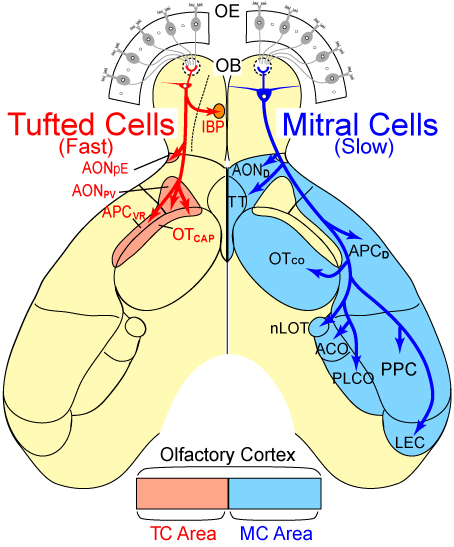Odor signals are conveyed from the olfactory bulb, a primary odor area in the brain, to the higher olfactory cortex by two distinct cell types, mitral cells (MCs) and tufted cells (TCs). However, whether and how the two types of projection neuron differ in function and axonal connectivity has been poorly understood. We compared odor responses and axonal projection patterns between MCs and TCs in mice by visualizing axons of electrophysiologically-identified single neurons. We found that TCs demonstrated shorter onset latency for reliable responses than MCs. The shorter latency response of TCs was maintained in a wide range of odor concentrations, whereas MCs responded only to strong signals. Furthermore, individual TCs projected densely to focal targets only in anterior areas of the olfactory cortex, whereas individual MCs dispersedly projected to all OC areas. Surprisingly, in anterior olfactory cortical areas, the two cell types projected to segregated sub-areas. Our results suggest that MCs and TCs transmit temporally distinct odor information to different OC targets.
Parallel Mitral and Tufted Cell Pathways Route Distinct Odor Information to Different Targets in the Olfactory Cortex
The Journal of Neuroscience, June 6, 2012 • 32(23):7970 –7985
Department of Physiology, Graduate School of Medicine, The University of Tokyo
(*Present affiliation: Kavli Institute for Systems Neuroscience and Centre for the Biology of Memory, Norwegian University of Science and Technology)























